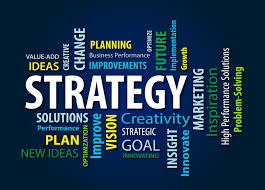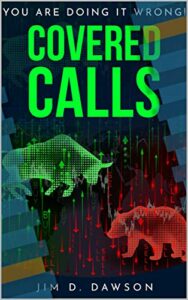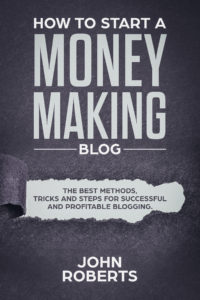Strategy
First, any strong and successful business has a defined Vision Statement and Purpose. These statements are ideal-based, rather than quantitative, but they’re statements that project the overall message of the business.
Your Vision and Purpose will likewise explain to people at a subconscious level what your blog is all about—the things you stand for, believe in, and want others to know about you.
Second, starting with Strategy and Structure is a recipe for disaster at worst, and leads to confusion at best.
Ask any professional or well-seasoned veteran blogger how many times they struggled trying to get the best theme or the coolest plugins installed on their site, and how much time they estimate they’ve wasted on trivial things, like neat-looking social media icons.
Their current design and layout wasn’t reached at random, by fiddling until it was “just right.” They stepped back and looked at their Purpose for blogging and their personal Vision for their blogging lifestyle, and built the structural components of their site accordingly.
You’ve done the same by focusing on those two aspects first, rather than two years down the road!
Who is your ideal reader?
WHO IS YOUR ideal reader?
Finding your ideal—or “perfect”—reader is paramount to developing a consistent and targeted branding identity.
You’ll need to know who your “ideal reader” is before you start writing, unless you’re only writing for yourself.
When clarifying your ideal reader, be as specific as possible—give them a name, identity, a job, and a family (if they have one…). Give them a face and body type, and a gender. You want to have a very specific idea of whom you’re trying to target.
Here’s a hint: Start by describing yourself!
What does your ideal reader want from you?
WHAT DOES YOUR ideal reader want from you?
What one question are they asking that they want you to answer?
If you don’t know what they’re asking, you can further refine your ideal reader or you can start looking online for questions. Seek out the websites and forums they’re using and reading (which ones are you reading?), and browse through the questions and answers they’re writing about.
What kinds of things does your ideal reader purchase?
WHAT KINDS OF things does your ideal reader purchase?
What do they buy that they need (staples—food, clothing, etc.) and what do they want to buy?
If you’re blogging about an improved staple (a “better mousetrap,” if you will), you’re going to have the benefit of not needing to talk people into why they need your product (they already use it). However, you’re going to have to figure out how to make a staple product (a lamp, macaroni and cheese, tires, etc.) noteworthy enough to write about over and over again.
On the other hand, products and services that are new to the general public or your target market are going to be easier to write about, but it will be harder to convince others of their necessity (and why they should buy from you).
Figure out what kinds of purchases your ideal reader makes, and craft your blogging message to their interests and needs.
Where do they currently buy the things they want and need?
WHERE DO THEY currently buy the things they want and need?
Are they an Amazon shopper, or a boutique shopper?
Most people are price-conscious, but a segment of online shoppers are just looking for the absolute best, regardless of cost.
If you can convince your readers that you not only have the best offering, for the best price, they might buy from you. One of the things bloggers forget, though, is that it’s not just the product quality and price that people are conscious of, but the reputation of the site.
They’ll buy from you only if your blog or website looks worthy enough of their business. Amazon has a proven track record of sales and customer satisfaction, and no one will argue that they’re going to take your money.
Convince your readers on a subconscious level that your site is reputable and ready for business through design, layout, and security.
What makes them want to buy?
WHAT MAKES THEM want to buy?
Everyone’s an impulse buyer when it comes to certain things—what makes your ideal reader purchase on the spot? In fact, what makes you purchase something immediately?
Think about grocery check out lines—magazines, gum, candy, energy drinks—all of these things speak to the inner subconscious of the consumer: “Oh yeah, I do need to know what’s going on with that celebrity wedding!”
What about your blog—your product—will make people buy (read) what you have to say? Is it a promise of something better? The opportunity to learn from your expertise? A personal account, told in an amazingly fresh way?
Think about this question, and write some possibilities—there probably aren’t any wrong answers, which makes it all the harder to do. But the longer you analyze these
How do you expect to gain traffic?
HOW DO YOU expect to gain traffic?
Traffic is crucial to a successful blog, unless your definition of success is having a site no one visits.
You need to start thinking about the ways you’ll attempt to direct readers to your blog, long before you start one. Do you have a preexisting platform or professional persona that will allow you to attract attention quickly? Are you going to run ads, pay for traffic, or hold giveaways?
One of the best ways to gain free, targeted, and engaged traffic is through a strategy called “guest-posting.” The idea is that you’ll write articles and blog posts for other sites, submitting to larger blogs in your niche. It’s a strategy many bloggers (including me!) have used to grow very quickly, and all it costs is time.
Used in conjunction with other traffic-generation methods can exponentially enhance your efforts, though, so start thinking about it now!



